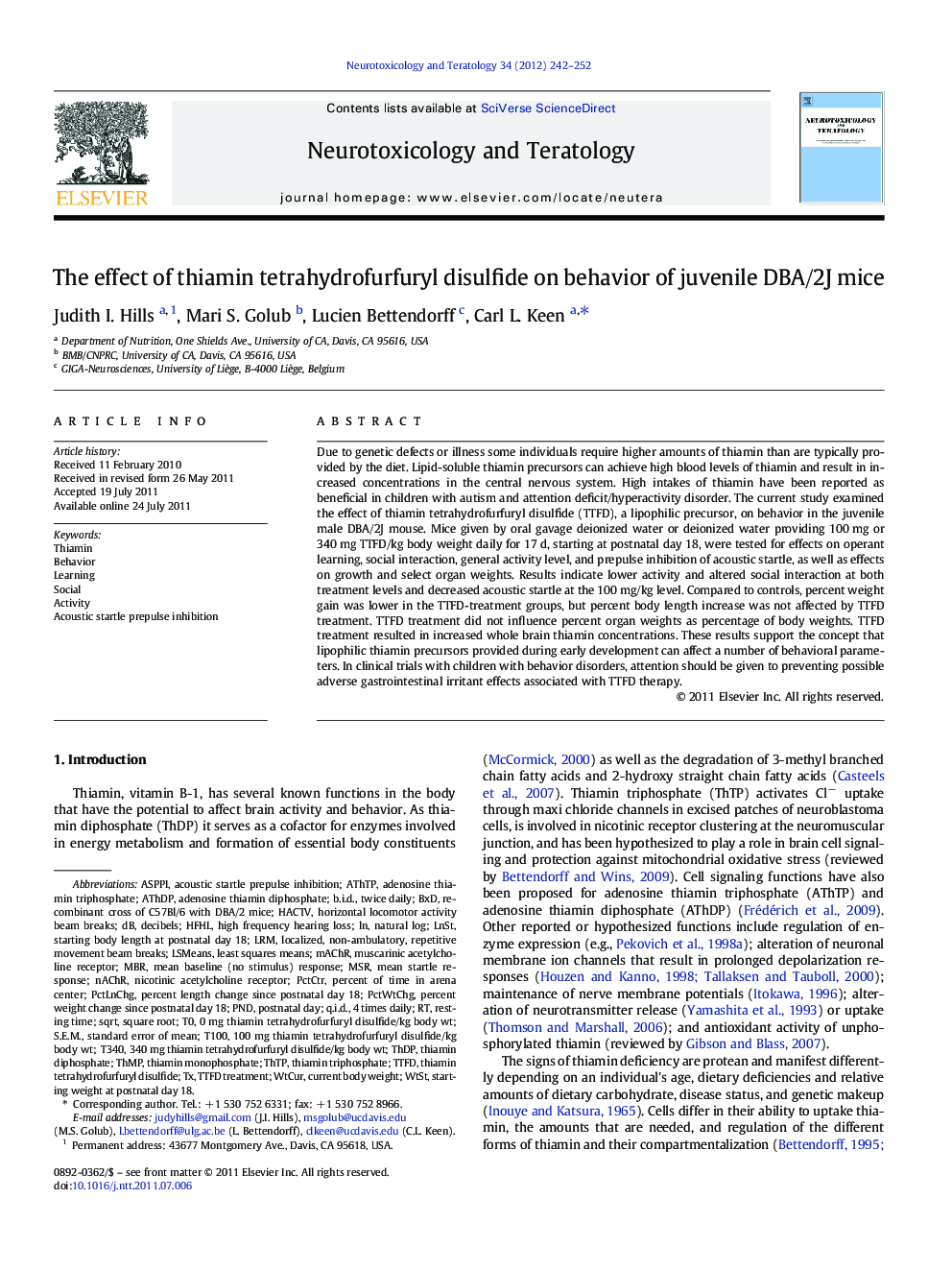| Article ID | Journal | Published Year | Pages | File Type |
|---|---|---|---|---|
| 2591316 | Neurotoxicology and Teratology | 2012 | 11 Pages |
Due to genetic defects or illness some individuals require higher amounts of thiamin than are typically provided by the diet. Lipid-soluble thiamin precursors can achieve high blood levels of thiamin and result in increased concentrations in the central nervous system. High intakes of thiamin have been reported as beneficial in children with autism and attention deficit/hyperactivity disorder. The current study examined the effect of thiamin tetrahydrofurfuryl disulfide (TTFD), a lipophilic precursor, on behavior in the juvenile male DBA/2J mouse. Mice given by oral gavage deionized water or deionized water providing 100 mg or 340 mg TTFD/kg body weight daily for 17 d, starting at postnatal day 18, were tested for effects on operant learning, social interaction, general activity level, and prepulse inhibition of acoustic startle, as well as effects on growth and select organ weights. Results indicate lower activity and altered social interaction at both treatment levels and decreased acoustic startle at the 100 mg/kg level. Compared to controls, percent weight gain was lower in the TTFD-treatment groups, but percent body length increase was not affected by TTFD treatment. TTFD treatment did not influence percent organ weights as percentage of body weights. TTFD treatment resulted in increased whole brain thiamin concentrations. These results support the concept that lipophilic thiamin precursors provided during early development can affect a number of behavioral parameters. In clinical trials with children with behavior disorders, attention should be given to preventing possible adverse gastrointestinal irritant effects associated with TTFD therapy.
► Thiamin tetrahydrofurfuryl disulfide altered behavior and growth in young DBA/2 mice. ► Locomotor activity was reduced, social interaction with conspecifics less vigorous. ► Auditory startle was reduced at one dosage level. ► Weight gain was reduced; growth in length and organs as percent of weight were not. ► Whole brain level of thiamin, but not phosphorylated derivatives, was increased.
